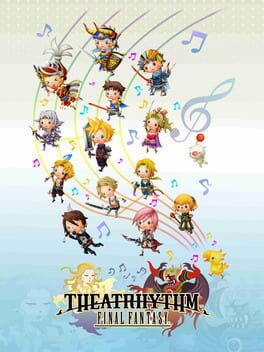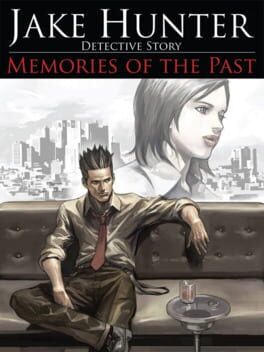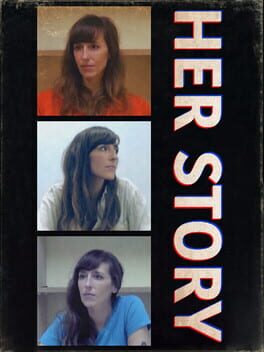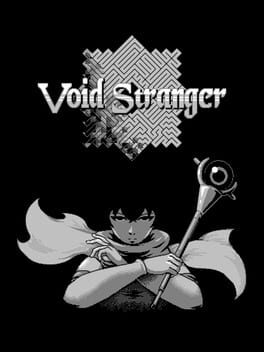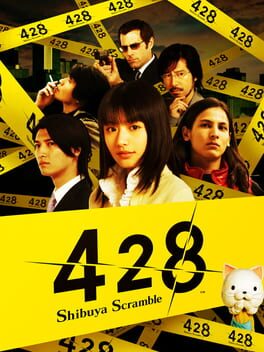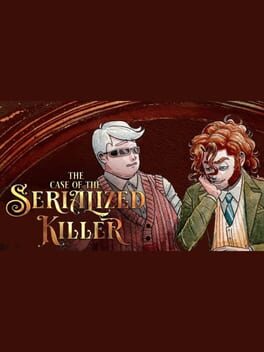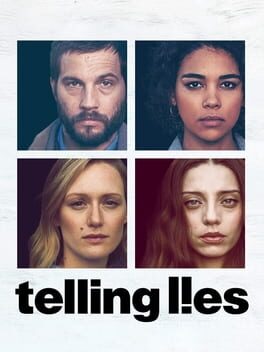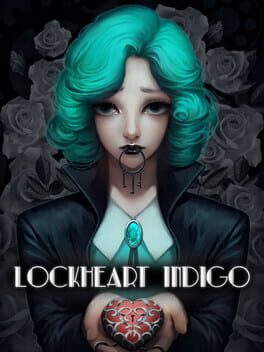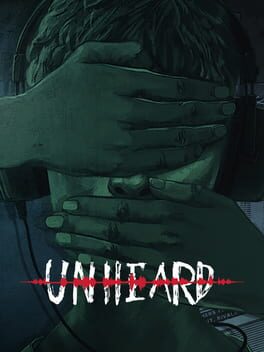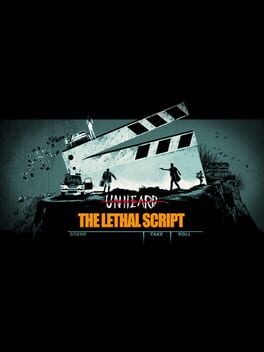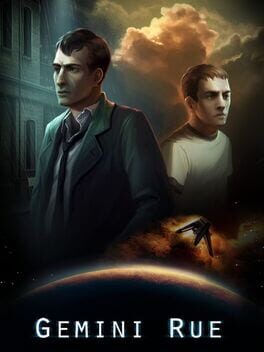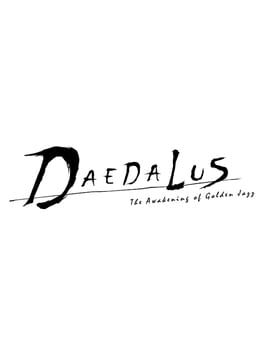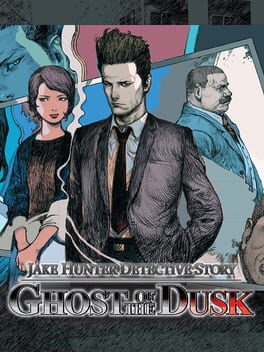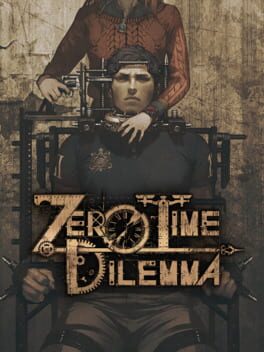bellwoods
2016
There are the 3-star games that are "just okay", and 3-star games that average out from epic highs and equally epic lows. This is very much the latter. Loved most of the plot, best party in a Tales game bar none, and Velvet is a great protagonist. But it's also bogged down by an ending I didn't care for, oversexualized female character designs, and numerous mechanical annoyances.
The combat system is much-maligned, even (especially) among Tales veterans, who often find it "too easy" and "button mashing". This was also my opinion at first, but after engaging with the systems for what they are (instead of just "this is not like other Tales games"), I ended up finding a lot of joy in Switch Blasts, Break Souls, Mystic Arte chains, and derivative artes. I mostly played as Eleanor, who has tremendous AoE and a fun capacity to juggle enemies, and any time I was inflicted with a status effect I got rid of it by Switch-Blasting to someone else. Swapping in and out and perpetually changing playstyles made things more enjoyable and chaotic.
I still found the vast majority of the bosses quite easy-- way too easy, really, like they weren't scaled to Hard difficulty. I'm not sure if there is a way to scale it to a challenging sweet spot, to be honest--the way the combat works creates a snowball effect where the more staggers you (or the enemy) inflict, the better combos you can pull off. That meant that mobs were almost invariably more challenging than bosses, and most of the difficulty with bosses came from not being able to collect souls as easily, and having to chip away at their health until you perform one big combo. Bit repetitive. I don't think it's a coincidence that the final boss fight is the only dual boss fight (as far as I remember) and also one of the only tough ones.
The combat system is much-maligned, even (especially) among Tales veterans, who often find it "too easy" and "button mashing". This was also my opinion at first, but after engaging with the systems for what they are (instead of just "this is not like other Tales games"), I ended up finding a lot of joy in Switch Blasts, Break Souls, Mystic Arte chains, and derivative artes. I mostly played as Eleanor, who has tremendous AoE and a fun capacity to juggle enemies, and any time I was inflicted with a status effect I got rid of it by Switch-Blasting to someone else. Swapping in and out and perpetually changing playstyles made things more enjoyable and chaotic.
I still found the vast majority of the bosses quite easy-- way too easy, really, like they weren't scaled to Hard difficulty. I'm not sure if there is a way to scale it to a challenging sweet spot, to be honest--the way the combat works creates a snowball effect where the more staggers you (or the enemy) inflict, the better combos you can pull off. That meant that mobs were almost invariably more challenging than bosses, and most of the difficulty with bosses came from not being able to collect souls as easily, and having to chip away at their health until you perform one big combo. Bit repetitive. I don't think it's a coincidence that the final boss fight is the only dual boss fight (as far as I remember) and also one of the only tough ones.
All I knew about this one was how much of a mess the original release was, so I was pleasantly surprised that the mysteries were actually pretty solid. My favourite was case 4 (where you get to play as Yoko/Yulia). The main cases are in a noir/realistic crime drama mode, while the "Unleashed" cases are more like five-minute mysteries.
Mechanically, there is some retro clunk, but having played plenty of menu-based adventure games, this didn't bother me. I don't have a comparison point for the original 80s games, but just based on this remake I felt like you could see some of the tone/style of this series in later detective games, moreso than e.g. Famicom Detective Club.
This is the "fixed" translation, which is hammier than a pulled pork stand at the State Fair (great). It's still aggressively Americanized (not great). This led to some bonkers moments such as a plot beat that relied on the map of the Tokyo Metro--or rather, the Aspicio subway system. Except since these are now fictional locations, the deduction turns into pointless, hard-to-follow process of elimination. Also there's a tendency to abbrv wrds to fit on the bttns, which occasionally makes deductions difficult. But you can't really fail, so.
Anyway, overall I enjoyed it a lot, and I'm glad I played it, though between the heavy localization, numerous typos, and at least one bug, I'm still rating it a 3 rather than a 4.
Mechanically, there is some retro clunk, but having played plenty of menu-based adventure games, this didn't bother me. I don't have a comparison point for the original 80s games, but just based on this remake I felt like you could see some of the tone/style of this series in later detective games, moreso than e.g. Famicom Detective Club.
This is the "fixed" translation, which is hammier than a pulled pork stand at the State Fair (great). It's still aggressively Americanized (not great). This led to some bonkers moments such as a plot beat that relied on the map of the Tokyo Metro--or rather, the Aspicio subway system. Except since these are now fictional locations, the deduction turns into pointless, hard-to-follow process of elimination. Also there's a tendency to abbrv wrds to fit on the bttns, which occasionally makes deductions difficult. But you can't really fail, so.
Anyway, overall I enjoyed it a lot, and I'm glad I played it, though between the heavy localization, numerous typos, and at least one bug, I'm still rating it a 3 rather than a 4.
2015
I managed to discourage myself from engaging with Her Story for quite a while, because I'd seen many people relate that they'd stumbled upon the solution "early" after having a cunning insight or lucky guess. After playing it, I feel like this was totally intentional: that the game paces itself, so to speak, such that any order you attack it will produce a viable story structure and "aha!" moments. It's not stingy with its clues, instead trusting the player to self-pace. The more I think about it, that's a really impressive magic trick.
My wife and I played it together--probably the best way to play it, really, in a group tossing out keywords. We got all the key scenes and the prompt to finish having seen (iirc) just under half the clips, then watched them again in chronological order for full context. (Appreciate that this was not a requirement for basic completion.)
In a story like this, character work is make-or-break, and Viva Seifert's performance carried it. I really don't expect to come out of a mystery like this feeling strongly about the characters, but here I really did. The subgenre turn might not be for everyone, but it worked for me.
My wife and I played it together--probably the best way to play it, really, in a group tossing out keywords. We got all the key scenes and the prompt to finish having seen (iirc) just under half the clips, then watched them again in chronological order for full context. (Appreciate that this was not a requirement for basic completion.)
In a story like this, character work is make-or-break, and Viva Seifert's performance carried it. I really don't expect to come out of a mystery like this feeling strongly about the characters, but here I really did. The subgenre turn might not be for everyone, but it worked for me.
2023
This review contains spoilers
Man, I really, really wanted to like this game, given its reputation in the genre, but I came away disappointed. Blame heightened expectations, perhaps, but when you're playing a game that infamously received a perfect score, the imperfections stand out: the drawn-out endgame and associated difficulty spike, the numerous fat jokes, the stereotypes about Southwest Asia, losing your only main route girl at 5 p.m...
I can still see why it had such a profound influence on VNs. The gameplay loop is fun and innovative, hopping between narratives to facilitate serendipitous coincidences and chance encounters that lead to a good outcome. There are a couple of great twists and brilliant brick jokes. But I just didn't like the story once it turned serious. Minorikawa's route was easily my favourite (Run Lola Run for writers) and it's the one with the least connection to the overarching plot.
I can still see why it had such a profound influence on VNs. The gameplay loop is fun and innovative, hopping between narratives to facilitate serendipitous coincidences and chance encounters that lead to a good outcome. There are a couple of great twists and brilliant brick jokes. But I just didn't like the story once it turned serious. Minorikawa's route was easily my favourite (Run Lola Run for writers) and it's the one with the least connection to the overarching plot.
2019
Her Story had better pacing.
That might seem like a strange thing to say about two games which can be played in any order, but Her Story is very clear upfront about the shape of the story (a disappearance turned murder) and your goal (solving said murder). It took me two hours of Telling Lies to even guess what I was supposed to be investigating. Her Story made it easy for you with the implausible contrivance that only the interviewee's dialogue was saved. This allowed for short clips with the occasional out-of-context whammy. Here, you are scrubbing through video calls that are often seven, eight, nine minutes long. It's more realistic, but also more of a slog. Especially when matching two sides of a video chat to each other: there are many recordings that are just: 🤨😐🤨🤨😮😬😔😐😐😐😠
As far as the plot, it's dealing with some heavy and topical issues, with mixed success. An intelligent point, with an unsatisfying delivery. And less emotional rapport with the protagonist. Specific spoilery thoughts in ROT 13 (CW sexual violence, police brutality):
Fb, V guvax gur cynlre vf vagraqrq gb qenj n yvar orgjrra Crgre'f hapurpxrq frkhny nohfr va gur npgvivfg pvepyr (juvpu vaibyirq gnxvat abapbafrafhny ivqrbf bs na haqrentr Nin) naq Qnivq fgnegvat n frkhny eryngvbafuvc jvgu Nin haqre snyfr cergrafrf (v.r. encr ol qrprcgvba). Gvr gung gb Znkvar'f pnz fubjf, juvpu vapyhqr inzcver/ulcabfvf/fyrrc cynl naq bgure sbezf bs jung fur pnyyf "encr snagnfl"--gur vyyhfvba bs jngpuvat n fyrrcvat jbzna jvgubhg ure xabjyrqtr, naq gur ercrngrq Fabj Juvgr zbgvs (Cevapr Punezvat fnirf Fabj Juvgr ol xvffvat ure juvyr fur vf nfyrrc). Ohg gura gur cynlre (nf SOV ntrag Xnera) nyfb unf gb pbzo guebhtu ubhef bs frk pungf naq bgurejvfr crefbany zngrevny npdhverq ol yrtnyyl dhrfgvbanoyr zrnaf. Vf jung jr'er qbvat nal orggre, be yrff iblrhevfgvp? Pbapyhfvba: fgngr fheirvyynapr vf ivbyngvat.
Ohg vs lbh nyernql nterr jvgu guvf cerzvfr--yrg nybar vs lbh'ir rkcrevraprq nalguvat yvxr gur riragf qrcvpgrq--gur bhgpbzr jvyy cebonoyl yrnir lbh pbyq. Oybjvat hc n oevqtr naq xvyyvat uvzfrys vfa'g gnxvat nppbhagnovyvgl, naq qbrfa'g uryc gur jbzra ur'f jebatrq, be gur crbcyr ur'f zheqrerq naq nffnhygrq. Juvpu, fher, Qnivq vf n cerggl greevoyr crefba, fb V pna ohl uvz znxvat n qrpvfvba yvxr gung. Ohg vg'f abg rknpgyl fngvfslvat. Gurer'f ab whfgvpr urer.
Anyway, that critique wasn't even why I stopped playing. It was actually because manually scrubbing through long videos on a trackpad (there are no buttons) was physically uncomfortable. I got the gist of what was happening and then dipped.
That might seem like a strange thing to say about two games which can be played in any order, but Her Story is very clear upfront about the shape of the story (a disappearance turned murder) and your goal (solving said murder). It took me two hours of Telling Lies to even guess what I was supposed to be investigating. Her Story made it easy for you with the implausible contrivance that only the interviewee's dialogue was saved. This allowed for short clips with the occasional out-of-context whammy. Here, you are scrubbing through video calls that are often seven, eight, nine minutes long. It's more realistic, but also more of a slog. Especially when matching two sides of a video chat to each other: there are many recordings that are just: 🤨😐🤨🤨😮😬😔😐😐😐😠
As far as the plot, it's dealing with some heavy and topical issues, with mixed success. An intelligent point, with an unsatisfying delivery. And less emotional rapport with the protagonist. Specific spoilery thoughts in ROT 13 (CW sexual violence, police brutality):
Fb, V guvax gur cynlre vf vagraqrq gb qenj n yvar orgjrra Crgre'f hapurpxrq frkhny nohfr va gur npgvivfg pvepyr (juvpu vaibyirq gnxvat abapbafrafhny ivqrbf bs na haqrentr Nin) naq Qnivq fgnegvat n frkhny eryngvbafuvc jvgu Nin haqre snyfr cergrafrf (v.r. encr ol qrprcgvba). Gvr gung gb Znkvar'f pnz fubjf, juvpu vapyhqr inzcver/ulcabfvf/fyrrc cynl naq bgure sbezf bs jung fur pnyyf "encr snagnfl"--gur vyyhfvba bs jngpuvat n fyrrcvat jbzna jvgubhg ure xabjyrqtr, naq gur ercrngrq Fabj Juvgr zbgvs (Cevapr Punezvat fnirf Fabj Juvgr ol xvffvat ure juvyr fur vf nfyrrc). Ohg gura gur cynlre (nf SOV ntrag Xnera) nyfb unf gb pbzo guebhtu ubhef bs frk pungf naq bgurejvfr crefbany zngrevny npdhverq ol yrtnyyl dhrfgvbanoyr zrnaf. Vf jung jr'er qbvat nal orggre, be yrff iblrhevfgvp? Pbapyhfvba: fgngr fheirvyynapr vf ivbyngvat.
Ohg vs lbh nyernql nterr jvgu guvf cerzvfr--yrg nybar vs lbh'ir rkcrevraprq nalguvat yvxr gur riragf qrcvpgrq--gur bhgpbzr jvyy cebonoyl yrnir lbh pbyq. Oybjvat hc n oevqtr naq xvyyvat uvzfrys vfa'g gnxvat nppbhagnovyvgl, naq qbrfa'g uryc gur jbzra ur'f jebatrq, be gur crbcyr ur'f zheqrerq naq nffnhygrq. Juvpu, fher, Qnivq vf n cerggl greevoyr crefba, fb V pna ohl uvz znxvat n qrpvfvba yvxr gung. Ohg vg'f abg rknpgyl fngvfslvat. Gurer'f ab whfgvpr urer.
Anyway, that critique wasn't even why I stopped playing. It was actually because manually scrubbing through long videos on a trackpad (there are no buttons) was physically uncomfortable. I got the gist of what was happening and then dipped.
2020
2019
DEVOURED this. I was a little leery going in, as Unheard looked like a Jumpscares Horror Game (and the game certainly leans into this implication to keep you on edge). In fact, it is a mini-mysteries game with zero jumpscares and a really neat investigation mechanic. Similar to Telling Lies, but the conversation matching worked much better. (And you can skip through the audio, no less.) Each case involves a complicated series of intersecting gambits, with you having to follow handoffs, shuffles, and true identities. I could have done without the "evil psych ward" stuff, and the plots weren't exactly deep, but the basic gameplay was so fun that I wish the game were longer.
Apparently the devs aren't planning to release the other two DLCs in English, as they are too based in Chinese culture to be localized like the base game is. Which is a shame, really--I would happily play it translated but unlocalized.
Apparently the devs aren't planning to release the other two DLCs in English, as they are too based in Chinese culture to be localized like the base game is. Which is a shame, really--I would happily play it translated but unlocalized.
This review contains spoilers
If keeping track of the identity swaps in the base game mysteries wasn't mind-melting enough, there's this extremely meta DLC case. A group of actors come to a hotel to perform a crime drama script, which turns out to be based on a real group of criminals who carrying out the deal in the script simultaneously with the rehearsal. Once you solve that mystery, an epilogue reveals that this story itself was a fictional TV show (but still based on real events), and the "real" gang are also actors, but this fake plot is exploited to cause a real murder. On top of that, you have meta references to the format, casting, and stories of the base game (including this one). Whew!
2011
Good grief, the gunplay mechanics. The adventure game puzzles were actually pretty good and logical (the one about getting the gun was particularly clever). But I couldn't stand the fighting. When they introduced the second dodge mechanic, I just threw up my hands and watched a walkthrough--though it turns out there aren't any more action sequences until the climax. Overall it would probably be a 3-star game for someone who is not me. I play puzzle games because I'm not good at shooters and don't really enjoy them, so can I really give that rating to something I couldn't physically complete?
Plot was decent. Low-key cribbing from Blade Runner, but it had good tension and a good payoff. Again, someone else would probably enjoy it a lot. Though there was one element I found kind of nonsensical.
ROT13 for spoilers:
Gur snpg gung gur qbpgbe jnf pbagvahvat gb birefrr guvf qvyncvqngrq snpvyvgl rira jura vg unq pyrneyl tbar gb fuvg, pbecfrf fgerja nobhg gur unyyjnlf, whfg orpnhfr gung jnf gur bayl guvat ur xarj ubj gb qb, jnf npghnyyl n ernyyl vagrerfgvat punenpgre orng gung V rawblrq. Ohg yrg zr trg guvf fgenvtug: gur fcnpr-Lnxhmn vf trggvat crbcyr ubbxrq ba fcnpr-urebva (n qeht jvgu jvguqenjny flzcgbzf frirer rabhtu gb xvyy lbh), fb gung gurl ner gbb jrnx gb erfvfg orvat fuvccrq bhg gb n "eruno snpvyvgl" gung vf npghnyyl sbe pbrepvat gur cngvragf vagb orpbzvat nffnffvaf ol fgneivat gurz naq jvcvat gurve zrzbevrf. Sbetrg jurgure gur crefbanyvgl/pbafpvrapr vf vaangr--jul jbhyq gurl tb gb guvf vafnar nzbhag bs gebhoyr pbaqvgvbavat hajvyyvat, jvguqenjny-fhssrevat, znyabhevfurq xvqanccvat ivpgvzf gb qb guvf wbo vafgrnq bs whfg uvevat crbcyr jub jnag gb or nffnffvaf?
Plot was decent. Low-key cribbing from Blade Runner, but it had good tension and a good payoff. Again, someone else would probably enjoy it a lot. Though there was one element I found kind of nonsensical.
ROT13 for spoilers:
Gur snpg gung gur qbpgbe jnf pbagvahvat gb birefrr guvf qvyncvqngrq snpvyvgl rira jura vg unq pyrneyl tbar gb fuvg, pbecfrf fgerja nobhg gur unyyjnlf, whfg orpnhfr gung jnf gur bayl guvat ur xarj ubj gb qb, jnf npghnyyl n ernyyl vagrerfgvat punenpgre orng gung V rawblrq. Ohg yrg zr trg guvf fgenvtug: gur fcnpr-Lnxhmn vf trggvat crbcyr ubbxrq ba fcnpr-urebva (n qeht jvgu jvguqenjny flzcgbzf frirer rabhtu gb xvyy lbh), fb gung gurl ner gbb jrnx gb erfvfg orvat fuvccrq bhg gb n "eruno snpvyvgl" gung vf npghnyyl sbe pbrepvat gur cngvragf vagb orpbzvat nffnffvaf ol fgneivat gurz naq jvcvat gurve zrzbevrf. Sbetrg jurgure gur crefbanyvgl/pbafpvrapr vf vaangr--jul jbhyq gurl tb gb guvf vafnar nzbhag bs gebhoyr pbaqvgvbavat hajvyyvat, jvguqenjny-fhssrevat, znyabhevfurq xvqanccvat ivpgvzf gb qb guvf wbo vafgrnq bs whfg uvevat crbcyr jub jnag gb or nffnffvaf?
Like some of the other games in the series, Daedalus has a pretty solid mystery shackled to gameplay that tests your commitment to finish it.
This Saburo Jinguji entry (under his original name here, rather than "Jake Hunter") ditches menu-based adventure gaming for a 360-degree camera view, liberal point-and-click investigation, a conversation mechanic, multiple endings... all of which I appreciated. But the implementation was seriously lacking. The UI appears to be trapped inside of a soap bubble. Some of the elucidation sections were poorly worded, if not completely opaque. And there was a persistent problem with options that should be possible to investigate in any order apparently being implemented linearly. E.g. Saburo says "I need to investigate the hardware store and the church," going to either of those locations has him act as if he is supposed to be there, but the conversation at the hardware store will not trigger until you've seen the one at the church, even though there is no logical relation between them. Lots of little things that made a decent story kind of a slog.
Anyway, I got this on sale for PS4 for $6, and at that price it was an enjoyable enough experience, believe it or not.
This Saburo Jinguji entry (under his original name here, rather than "Jake Hunter") ditches menu-based adventure gaming for a 360-degree camera view, liberal point-and-click investigation, a conversation mechanic, multiple endings... all of which I appreciated. But the implementation was seriously lacking. The UI appears to be trapped inside of a soap bubble. Some of the elucidation sections were poorly worded, if not completely opaque. And there was a persistent problem with options that should be possible to investigate in any order apparently being implemented linearly. E.g. Saburo says "I need to investigate the hardware store and the church," going to either of those locations has him act as if he is supposed to be there, but the conversation at the hardware store will not trigger until you've seen the one at the church, even though there is no logical relation between them. Lots of little things that made a decent story kind of a slog.
Anyway, I got this on sale for PS4 for $6, and at that price it was an enjoyable enough experience, believe it or not.
It's a miracle that the third game in the trilogy managed to get made, so I suppose I'm glad that Zero Time Dilemma exists at all. An imperfect ending with some dangling plot threads is better than no ending. There are some memorable moments (though much of what I liked here was done better in Nirvana Initiative), and C-team's "divorced polycule" dynamic was a strong point.
There is one big difference from the previous entries that I want to highlight, because it's where the game ultimately doesn't work for me. In 999 and VLR, the puzzle rooms are honest, a kind of no-man's land. When they're not 100% safe, you at least understand Zero to be playing fair. There is the occasional scare or corpse to put you on edge, the fear that something might be waiting in the next room, but success never puts you in any real danger. If some of your companions have serial killer tendencies, they'll nobly put them aside while you work together on solving the soup cans. And if you complete the room successfully, you are rewarded with keys, passwords, useful items, information.
ZTD turns this formula on its head: your "reward" for completing the room tends to be your beloved characters getting machine-gunned. Or gassed. Or incinerated. Or hell, blowing up the entire facility. It's firmly operating in the Saw school of puzzle design: less "player epiphany" than "player antipathy". In another game, this might have been an interesting design choice. In a Zero Escape game, I found it disappointing. ZTD circles back to the very formula 999 was subverting, but the reason I liked the latter game was because I consider that formula to be misanthropic and rather dull. In other words, it's a fine enough game taken on its own terms, but as a direct sequel, it can't be taken on its own terms.
There is one big difference from the previous entries that I want to highlight, because it's where the game ultimately doesn't work for me. In 999 and VLR, the puzzle rooms are honest, a kind of no-man's land. When they're not 100% safe, you at least understand Zero to be playing fair. There is the occasional scare or corpse to put you on edge, the fear that something might be waiting in the next room, but success never puts you in any real danger. If some of your companions have serial killer tendencies, they'll nobly put them aside while you work together on solving the soup cans. And if you complete the room successfully, you are rewarded with keys, passwords, useful items, information.
ZTD turns this formula on its head: your "reward" for completing the room tends to be your beloved characters getting machine-gunned. Or gassed. Or incinerated. Or hell, blowing up the entire facility. It's firmly operating in the Saw school of puzzle design: less "player epiphany" than "player antipathy". In another game, this might have been an interesting design choice. In a Zero Escape game, I found it disappointing. ZTD circles back to the very formula 999 was subverting, but the reason I liked the latter game was because I consider that formula to be misanthropic and rather dull. In other words, it's a fine enough game taken on its own terms, but as a direct sequel, it can't be taken on its own terms.
